





















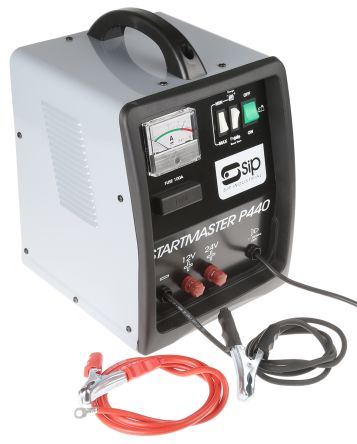
RS PRO Battery Charger For Lead Acid 12V 33A with UK plug
RS Stock No. 767-4926
Brand RS Pro
- Charge Current: 33A
- Input Voltage: 230V ac
- Output Voltage: 12 V, 24V
AED 2.452.07
in stock now
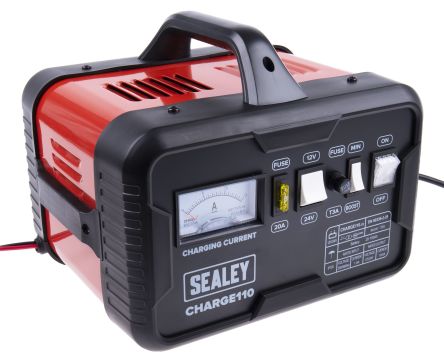
RS PRO Battery Charger For Lead Acid 1 Cell 12V 14A with UK plug
RS Stock No. 771-6276
Brand RS Pro
- Category: Battery Chargers
- Charge Current: 14A
- Plug Type: UK
AED 1.247.53
in stock now
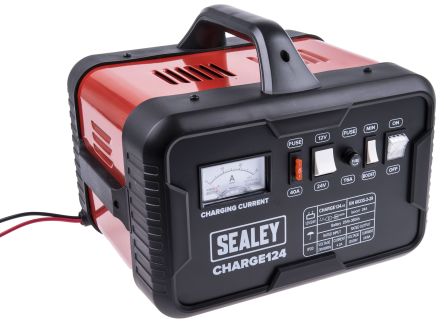
RS PRO Battery Charger For Lead Acid 1 Cell 12V 28A with UK plug
RS Stock No. 851-7492
Brand RS Pro
- Category: Battery Chargers
- Number of Batteries Charged: 1
- Plug Type: UK
AED 1.667.31
in stock now
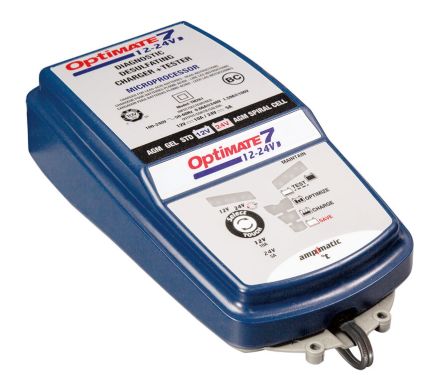
TecMate Optimate 7 Battery Charger For Lead Acid 12 V, 24 V 12V 10A
RS Stock No. 161-1569
Brand TecMate
- Battery Type Charged: Automotive
- Category: Battery Chargers
- Number of Batteries Charged: 1
AED 1.185.96
in stock now
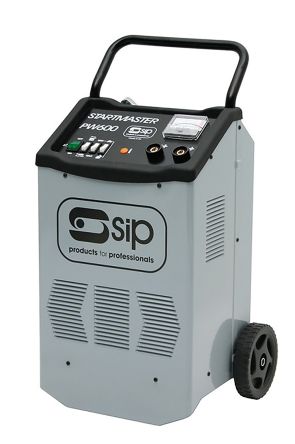
SIP 05536 Battery Charger For Lead Acid 12 V, 24 V 12V 45A with EU plug
RS Stock No. 137-0768
Brand SIP
- Battery Sizes Charged: 12 V, 24 V
- Plug Type: EU
- Weight: 21kg
AED 2.999.30
in stock now
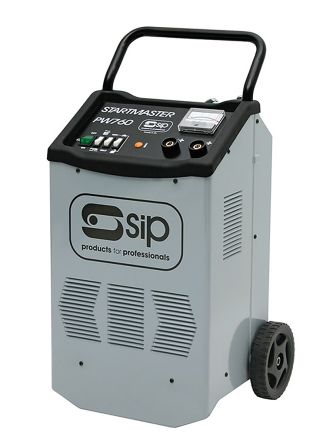
SIP 05537 Battery Charger For Lead Acid 12 V, 24 V 12V 57A with EU plug
RS Stock No. 137-0769
Brand SIP
- Battery Sizes Charged: 12 V, 24 V
- Category: Battery Chargers
- Weight: 25kg
AED 3.572.54
in stock now
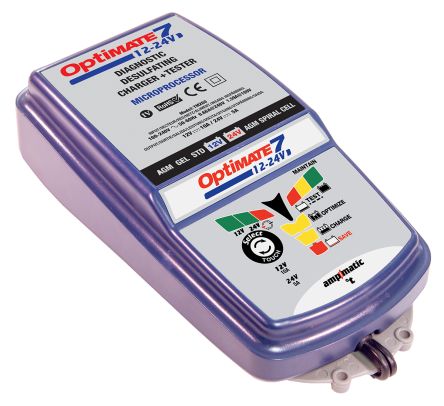
TecMate Optimate 7 Battery Charger For Lead Acid 12 V, 24 V 12V 10A with UK plug
RS Stock No. 161-1570
Brand TecMate
- Charge Current: 10 A, 5A
- Input Voltage: 100 → 240V
- Output Voltage: 12 V, 24V
AED 1.186.18
in stock now
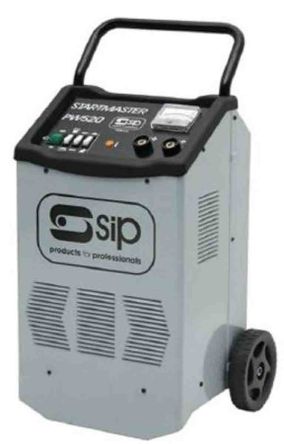
SIP 5534 Battery Charger For Lead Acid 12 V, 24 V 12V 25A with UK plug
RS Stock No. 201-8050
Brand SIP
- Charge Current: 25A
- Number of Batteries Charged: 1
- Weight: 21kg
AED 2.650.80
in stock now
What is a 12V/24V battery charger and what does it do?
What types of devices and vehicles can a 12V/24V charger power or revive?
- Automobiles (cars and light trucks) with 12V batteries
- Commercial fleets and service vehicles with 24V systems
- Motorcycles, ATVs, and small marine craft with 12V batteries
- Boats, RVs, caravans, and off-grid solar storage banks (12V/24V packs)
- Lead-acid battery banks (SLI, AGM, gel) and LiFePO4 battery packs
- UPS systems, power tools, and golf carts where applicable
- Emergency equipment and remote installations where mains power is intermittent
What features should I look for in a 12V/24V charger?
- Multi-chemistry support: compatibility with lead-acid (SLI, AGM, gel) and LiFePO4/Li-ion batteries.
- CC-CV charging profile: constant current until a target voltage is reached, then constant voltage with automatic tapering.
- Automatic battery detection: selects the correct voltage (12V or 24V) and chemistry without manual switching.
- Float or maintenance mode: long-term keeping of a healthy charge for stored batteries.
- Safety protections: reverse polarity protection, short-circuit protection, overcurrent protection, overvoltage protection, and temperature monitoring.
- Temperature compensation to adapt charging based on ambient or battery temperature for optimum safety and efficiency.
- Input flexibility: wide AC input range (often 100–240V AC) and selectable output currents (from a few amps up to 20–40A).
- Connector options: alligator clamps, ring terminals, or DC outlet adapters for convenient on-vehicle charging.
- Portability and form factor: wall-mountable, compact, or bench-top designs for workshop or field use.
- Certifications and durability: CE, UL, IP ratings for splash resistance, and rugged construction for workshop environments.
How do I choose between a 12V charger, a 24V charger, or a dual-voltage unit?
- Single-voltage needs: If your equipment uses only 12V or only 24V batteries, a dedicated charger tuned to that voltage is simplest and most cost‑effective.
- Mixed-vehicle fleets or multiple systems: A dual-voltage charger that can automatically switch between 12V and 24V is ideal for workshops, fleets, or households with varied equipment (cars, trucks, boats, and solar storage).
- Battery chemistry: Confirm that the charger supports your battery type (lead-acid variants or LiFePO4/Li-ion) and the required charging profile.
- Charging speed vs. heat: Higher current outputs charge faster but generate more heat; ensure the charger and battery can safely handle the rate.
Can a 12V/24V charger handle LiFePO4 and other lithium batteries as well as lead-acid?
What are common input/output specifications for 12V/24V battery chargers?
- Input: 100–240V AC, 50/60 Hz, suitable for global use.
- Output: DC, selectable 12V or 24V depending on the unit or battery connected.
- Charging current: ranges from about 0.5A up to 40A or more for fast charging, with many units offering 2–20A in everyday use.
- Charge modes: CC (constant current) and CV (constant voltage), plus maintenance/float modes for long-term storage.
- Protection features: reverse polarity, overcurrent, overvoltage, short circuit, thermal protection, and adaptive temperature compensation.
How do I use a 12V/24V charger safely and effectively?
- Read the battery manufacturer’s charging recommendations for voltage, current, and chemistry.
- Inspect cables, clamps, and connectors for wear or damage before use.
- Connect correctly: red clamp to the positive terminal, black clamp to the negative terminal. Ensure a clean contact with no corrosion.
- Power the charger from a suitable AC outlet and select the appropriate voltage and chemistry mode if required.
- Choose a reasonable charging current for the battery’s capacity (for example, 0.1C to 0.3C is common for maintenance charging).
- Stay with the charger during the initial charging phase and monitor for heat, abnormal smells, or sparking.
- When a full charge is indicated, disconnect and store safely. For maintenance charging, enable float mode if available.
What maintenance tips help prolong the life of a 12V/24V charging system?
- Keep clamps and cables clean and free of corrosion; apply a light dielectric grease where appropriate.
- Store the charger in a dry, dust-free area and protect it from moisture and extreme temperatures.
- Inspect the charger’s cooling vents and ensure adequate airflow to prevent overheating on higher current settings.
- Periodically check the battery's state of charge and health; replace batteries that no longer hold a charge effectively.
- Regularly test safety features and fuses to ensure protection mechanisms remain functional.
- Follow battery manufacturer guidance for equalization and desulfation cycles if recommended.
Where can I find reliable 12V/24V battery chargers and what should I look for in a retailer?
- Dual-voltage functionality with automatic switching
- Comprehensive protection features and temperature compensation
- Multi-chemistry compatibility for lead-acid and LiFePO4/Li-ion packs
- Documentation including user manuals, warranty terms, and technical data
- Positive customer feedback and robust after-sales support